-
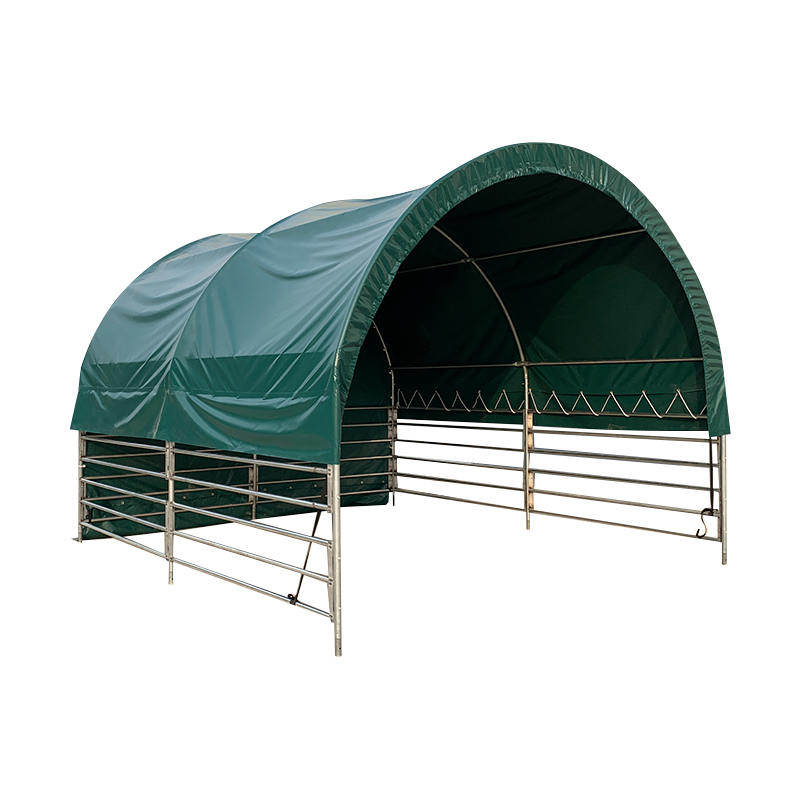 4x4mx3.15m Portable Livestock Shelters for Horses, Cows, Sheeps
4x4mx3.15m Portable Livestock Shelters for Horses, Cows, SheepsLive Stock Tent / Pasture Tent
-
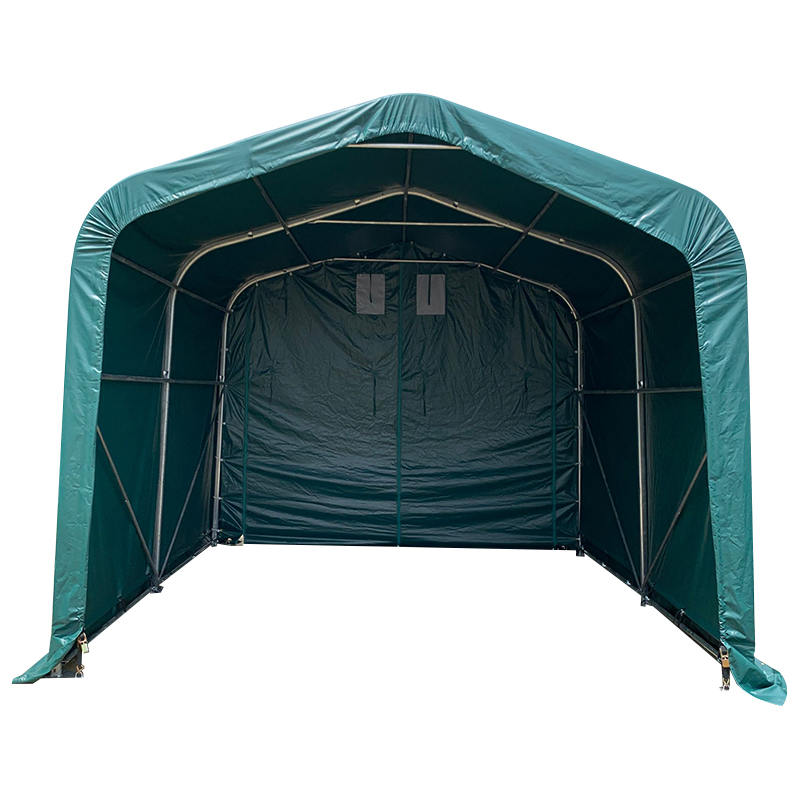 4x4m-2.6m Pasture Shade Shelter Heavy Duty Outdoor Storage Shed Corral Shelter
4x4m-2.6m Pasture Shade Shelter Heavy Duty Outdoor Storage Shed Corral ShelterLive Stock Tent / Pasture Tent
Live Stock Tent / Pasture Tent Manufacturers
Products & Solutions
CONTACT US
-

+86 15695147631
-

-

No.9 Kangmin Road, Automobile industry Park, Yizheng City, Jiangsu Province, China
Livestock tent provides a unique solution for those looking for a portable building to protect their livestock. Our livestock shelters are affordable, flexible, and durable. Many clients in the agriculture business use our livestock shelters for a variety of purposes. Whatever the purpose of your portable livestock shelter, you can have the peace of mind that your animals are protected from the harsh elements of weather.
Our heavy duty buildings are constructed from steel frames that are galvanized to avoid rust. Our fabric covers are fire-rated, UV-protected, and multi-layered to provide durable coverage that meets all storage standards.
Multiple Uses with Livestock tents
Whether you need a basic loafing shed, a safe horse shelter, or a dry place for your calves and other livestock animals to find shelter, we’ve got a variety of options from which you can choose. In addition to storing livestock, many customers use these portable storage shelters to protect their farm equipment.
From Shade to Shelter from the Storm
Livestock shelters can protect all types of animals. Whether you need to offer shade in large open areas, or need a place to protect your livestock from the cold winter weather or heavy summer storms, we has the solution for you.
You’ve Got Options
Our livestock tents come in a variety of sizes. The smaller options are great for individual calves, horses, or sheep. We offer larger sizes that can accommodate horses, large groups of livestock, and even protect your large farm and ranch equipment.
Our livestock tents are versatile and durable. They are a great addition to any livestock farm and can even be used for your personal at-home animals. Doors can be added for extra protection and privacy or removed for more freedom for your animals.
Our Livestock Tent Are Versatile
Even if you invest in a livestock shelter for a storage need that has been fulfilled, these buildings are versatile. They can be transformed to meet all your storage needs.
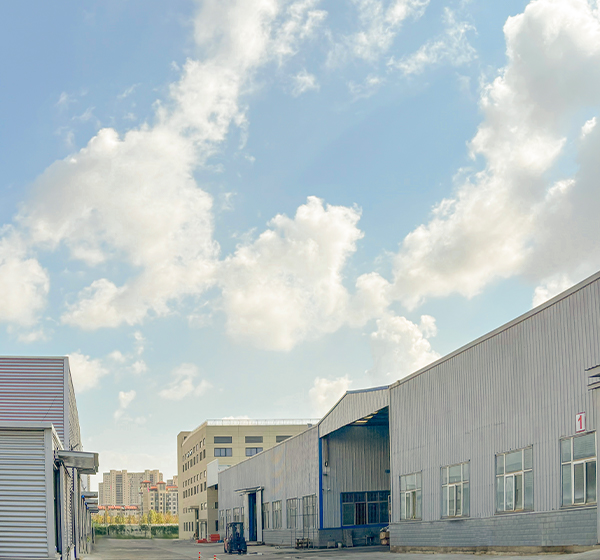
-
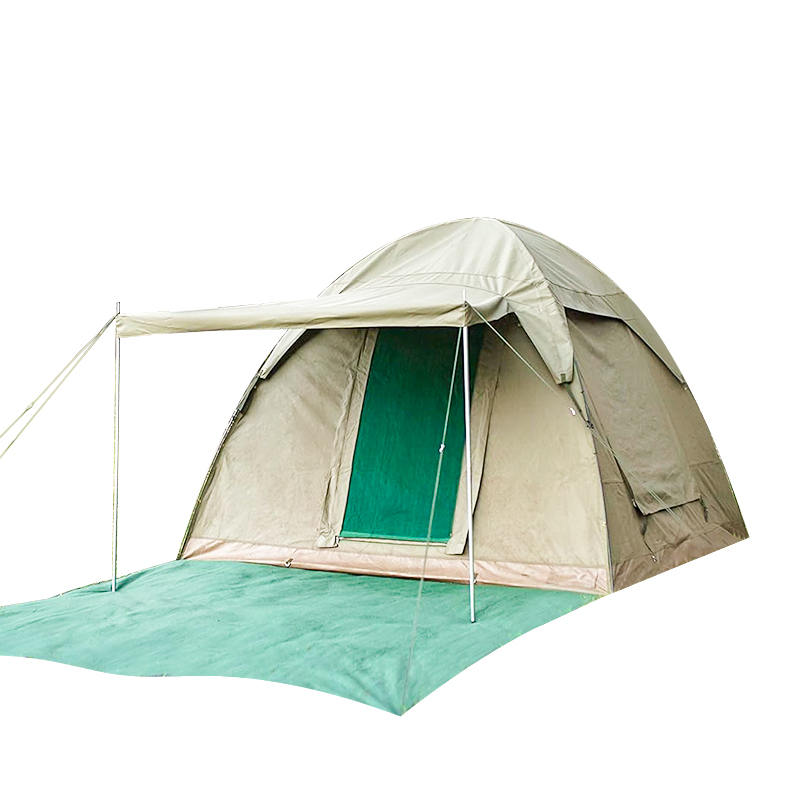
What Do Waterproof Ratings for Camping Backpacking Tents Actually Mean? Waterproof ratings (measured in millimeters, mm) quantify a tent’s ability to resist water penetration, based on standardized hydrostatic head testing. The rating represents the height of a water column the t...
READ MORE -
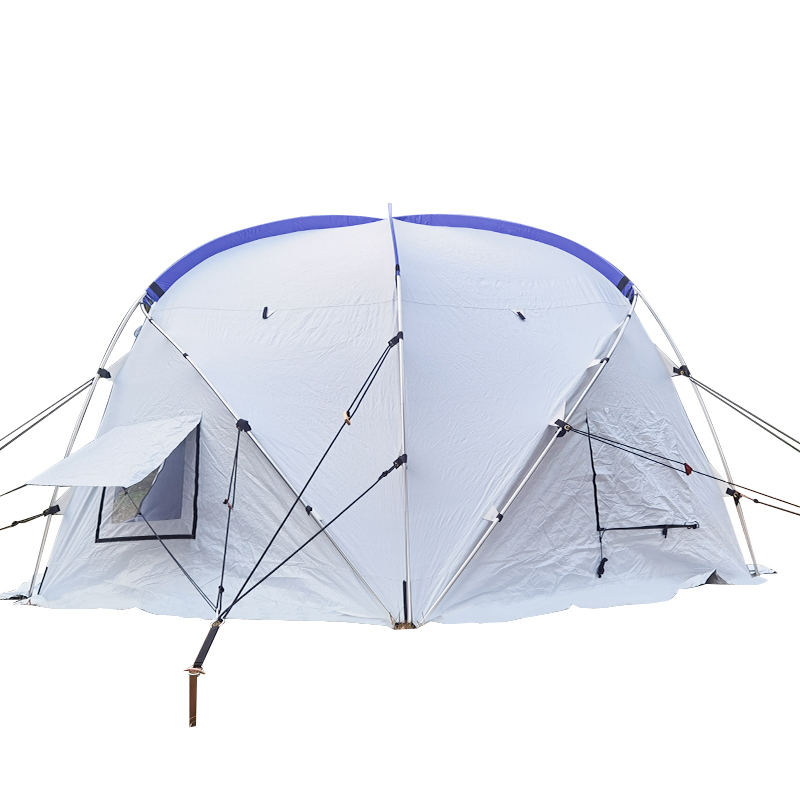
What core fabrics lay the foundation for windproof and waterproof relief tent? The windproof and waterproof performance of relief tent starts with the selection of core fabrics, which must withstand harsh natural conditions such as strong winds, heavy rains, and even hailstorms i...
READ MORE -
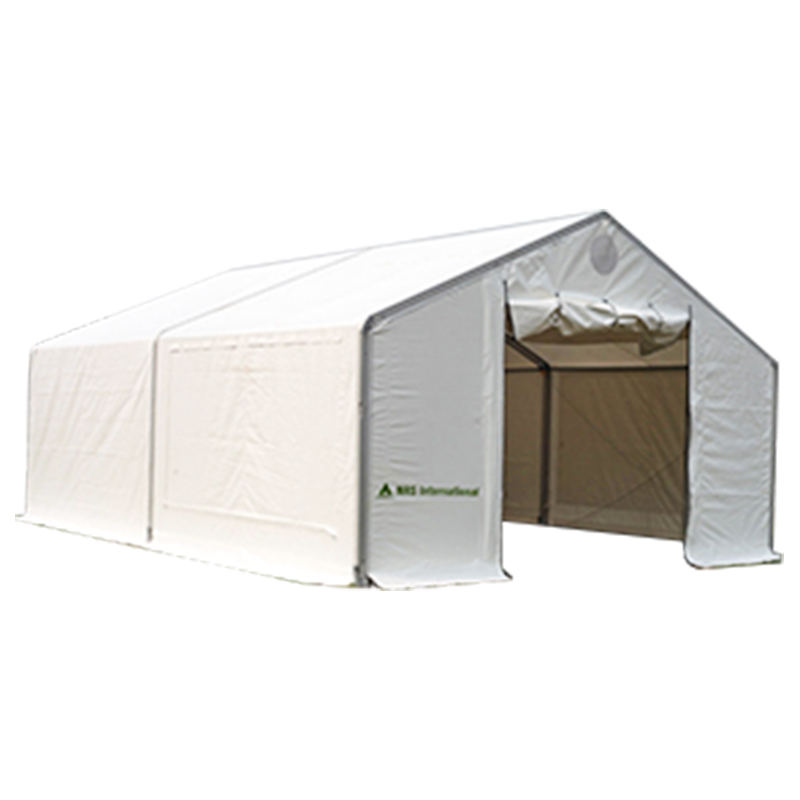
What Cost Advantages Make Warehouse Tents More Economical Than Traditional Warehouses? The core appeal of warehouse tents lies in their significant cost savings, which can reach up to 50% compared to traditional brick-and-mortar warehouses. First, the construction cost is far low...
READ MORE
1. Both Live Stock Tents and Pasture Tents serve livestock farming scenarios, but differ in their functional positioning and applicable scenarios. What are the core differences between the two, and how can one choose the right one based on the type of livestock being farmed and the scale of the ranch?
The core differences between Live Stock Tents / Pasture Tents lie in their functional focus and adaptability to specific scenarios. Live Stock Tents (livestock tents) focus on livestock protection and temporary feeding, providing temporary shelter from wind and rain, cold and heat. Their structural design must balance livestock movement needs with epidemic prevention measures. They are suitable for short-term farming scenarios (such as seasonal relocation and temporary post-disaster relocation), small-scale farming (such as individual farmers and family ranches), and as supplementary space in fixed farms (for seedling cultivation and sick animal isolation). They are suitable for common livestock species such as cattle, sheep, and pigs. Pasture tents are more of a "ranch support service." Besides serving as temporary shelter for livestock, they can also serve as temporary offices, feed storage, and veterinary clinics for ranch staff. These tents offer a more comprehensive range of functions, and their structural design must address the needs of both humans and livestock. They are suitable for large-scale ranches (such as grassland ranches and large-scale breeding bases), long-term ranching operations, and are particularly well-suited for nomadic environments requiring frequent movement. When choosing a tent, a Live Stock Tent is preferred for temporary livestock housing, while a Pasture Tent is preferred for large-scale ranches requiring comprehensive support.
2.A Live Stock Tent must provide a basic habitat for livestock: shelter from wind, rain, ventilation, and cold. What characteristics must its structural design and fabric selection possess to meet livestock growth needs and ensure safe farming?
This basic habitat must be optimized based on livestock habits and the challenges of the outdoor environment. In terms of structural design, a "large space without dense columns" layout is required to ensure that livestock have ample room to move around, while also facilitating feeding and cleaning by ranch staff. The canopy is designed with a steep slope to accelerate the runoff of rain and snow, preventing accumulation on the top from collapsing the tent. Adjustable roller blinds can be designed on the sides, which can be rolled up on sunny days to enhance ventilation and lowered on rainy days or in cold weather to block out wind and rain, thus ensuring both ventilation and protection. Fabrics must be wear-resistant, waterproof, and UV-resistant to protect against livestock trampling, gnawing, and harsh outdoor environments. An insulation layer can be added to the inside to cope with low temperatures and protect livestock from freezing. Breathable fabrics can be used in some scenarios to enhance ventilation and heat dissipation in the summer, preventing heatstroke in livestock caused by the stuffiness inside the tent. Wear-resistant and non-slip mats can be laid on the ground to reduce the risk of livestock slipping and injury, while also facilitating the cleaning of manure and maintaining a hygienic breeding environment.
3. The Pasture Tent needs to accommodate both "temporary livestock shelter" and "ranch support services" (such as feed storage, veterinary treatment, and staff rest). What flexibility is required in its internal spatial zoning and functional design to accommodate diverse ranch needs?
Adapting to diverse ranch needs requires flexible zoning and modular functionalization. Regarding spatial zoning, the tent can be divided into "livestock shelter," "feed storage," "treatment," and "rest area" using removable partitions. The livestock shelter area should have ample room for movement and a non-slip and anti-fouling floor. The feed storage area should be dry and ventilated, equipped with moisture-proof shelves to prevent feed mold. The treatment area can be designed with a simple operating table and reserved electrical outlets to facilitate veterinary use of equipment. The rest area should be of moderate size and equipped with basic rest facilities to meet the temporary rest needs of ranch staff. In terms of functional design, the tent entrance should be designed with a wide passageway to facilitate the entry and exit of feed trucks and medical equipment. Dedicated feeding ports can be installed on the side to reduce environmental changes caused by opening and closing the main door. Hooks and shelf mounting points are reserved inside to facilitate the addition and removal of storage or operating facilities as needed. Some styles can be expanded through modular splicing, allowing for flexible adjustment as the ranch expands, fully adapting to the complex needs of the ranch.
4.Ranching is often outdoors, and livestock activities are prone to collisions and fecal contamination. What enhancements are needed in the structural durability and cleanliness and maintenance design of Live Stock Tent and Pasture Tent to extend their service life?
Structural durability and cleanliness and maintenance require specific enhancements tailored to the characteristics of livestock activities and the outdoor environment. In terms of structural durability, the frame needs to be made of high-strength metal (such as galvanized steel pipe) to enhance its collision resistance and prevent deformation of the frame caused by livestock collisions; the frame joints need to be reinforced to improve overall stability; the fabric should be made of highly wear-resistant material and coated with an anti-bite coating on the surface to reduce damage caused by livestock; the edges of the fabric that come into contact with the ground should be thickened to resist ground friction and livestock trampling. In terms of cleaning and maintenance design, the surface of the fabric needs to be coated with an anti-fouling coating, so that feces, feed residues, etc. are easy to clean and can be directly rinsed with water; the internal corners are designed with arcs to avoid sanitary dead corners and reduce dirt accumulation; the bottom of the tent can be designed with a removable mat for regular removal, cleaning or replacement; ventilation windows can be opened on the sides to enhance air circulation and reduce odor accumulation; some styles can have a sewage outlet reserved at the bottom to facilitate sewage and feces cleaning. By synergizing durability and cleanliness design, the service life of the tent can be extended.
5. Ranches often face severe weather conditions such as heavy rain, strong winds, low temperatures, and high temperatures. What weather protection features should Live Stock Tents and Pasture Tents have in their design to ensure livestock safety and the smooth operation of ranch operations?
Protection against severe weather requires comprehensive, targeted protection against different weather risks. For rain protection, the canopy should be constructed of high-density waterproof fabric with sealed seams to prevent leakage during heavy rain. Rain skirts should be installed around the edges of the canopy to prevent rainwater from seeping through cracks in the ground. Drainage trenches can be dug around the tent to direct rainwater away from the tent and prevent ground water from soaking the tent base. For wind protection, the frame should feature a triangular stabilization structure to enhance wind resistance. The bottom of the frame should be secured with buried or counterweighted anchors to improve overall stability. High-strength wind rope anchor points should be provided around the tent to reduce lateral impact from strong winds. The adjustable roller blind should fit snugly against the frame when lowered to prevent strong winds from entering the tent. For both low and high temperature protection, the tent interior can be insulated or equipped with heating connections to maintain a comfortable temperature during low temperatures. During high temperatures, the side curtains can be fully opened to enhance ventilation and heat dissipation, and the roof can be equipped with a sunshade to reduce the temperature inside the tent. Some styles feature skylights for ventilation to promote air circulation, ensuring livestock safety and normal ranch operations in extreme weather.
6.Ranches often need to relocate based on seasons or pasture conditions. What features should the Live Stock Tent and Pasture Tent possess in terms of portability and rapid setup to accommodate these transitions?
Adaptation to these transitional needs should be optimized around ease of mobility and rapid deployment. Regarding portability, the frame should be modular and disassembled into smaller components for easy loading and transport. Components should be moderately heavy to avoid being difficult to carry. Dedicated storage bags should be provided to organize the frame, fabric, and accessories to minimize damage and loss during transportation. The quick-setup design features snap-on or bolt-on frames, requiring no complex tools and requiring only 2-3 people to complete. The fabric and frame are secured with hooks or Velcro, allowing for quick installation once unfolded, significantly reducing setup time. No complex site preparation is required before installation; the tents can be set up directly on any open space in the pasture, adapting to temporary conditions after relocation. Some lightweight models are foldable and automatically unfold into their original shape, further improving setup efficiency and ensuring a quick place for livestock to rest and pasture operations after relocation.
7. What advantages does Yangzhou Mailenda Outdoor Products Co., Ltd. have in the production and supply of Live Stock Tents and Pasture Tents to ensure their products' suitability for pastures and reliability?
As a company with over 20 years of experience in the outdoor products industry, Yangzhou Mailenda Outdoor Products Co., Ltd. boasts numerous advantages in the production and supply of Live Stock Tents and Pasture Tents. On the production side, the company is familiar with the specific needs of livestock and ranching scenarios and uses high-strength, wear-resistant fabrics and galvanized steel pipe frames to ensure the product's resistance to livestock collisions and outdoor erosion. Advanced equipment such as automatic cutting machines and hot air seam sealing machines precisely control the frame processing accuracy and fabric seam sealing quality, ensuring waterproof and durable performance. The company can also customize tent size, internal partitions, and functional configuration based on the type of livestock (such as cattle or sheep) and the scale of the ranch to improve ranch adaptability. Regarding quality control, a strict factory inspection process is established, including collision testing of the frame, wear and waterproof testing of the fabric, and wind resistance testing of the overall structure to simulate actual ranch use scenarios and ensure product reliability. Metal components undergo salt spray testing to verify rust resistance and ensure long-term outdoor use. On the supply side, with two production bases and ample production capacity, the company can quickly respond to bulk orders and support the procurement of multiple tents for ranches with frequent animal migration. Construction guidance and after-sales maintenance services are provided to help ranch staff use the product efficiently, providing reliable tent solutions for livestock breeding and ranching operations.


 English
English 中文简体
中文简体 Español
Español 日本語
日本語 русский
русский عربى
عربى


